MOVE in ROAD: Multi-objective Vehicle Monitoring Using River Formation Dynamics and Deep Learning Algorithms

These days, a significant portion of the solutions for vehicle Internet of things applications come from wireless sensor networks. This article uses cameras, radio-frequency identification, and ultrasonic sensors to address typical issues with vehicle technology, such as unlawful vehicle use inside a community, vehicle thefts, and vehicle accidents. It also addresses the issue of identifying vehicle pollution parameter values like carbon monoxide (CO) and carbon dioxide ( \(\textrm_2\) ), providing information about the driver’s alcohol consumption, and verifying the driver’s eligibility (driving license). The driving license will be used to identify the driver. Deep learning algorithms, such as Multi-Task Cascaded Convolutional Neural Networks and facenet algorithms, can identify driving licenses. The proposed algorithm has an 92% accuracy rate in detecting the driver’s face. The proposed system is installed and demonstrated using Micro-controller, Micro-processor and other sensors in real time environment. The River Formation Dynamics based Multi-hop Routing Protocol for Vehicles (RFDMRPV) is used for communication between vehicles. Data collected from the sensors mounted in vehicles are communicated to server utilizing RFDMRPV for storing. Alert the driver, owner of the vehicle and other authorities depending on the acquired sensor results.
This is a preview of subscription content, log in via an institution to check access.
Access this article
Subscribe and save
Springer+ Basic
€32.70 /Month
- Get 10 units per month
- Download Article/Chapter or eBook
- 1 Unit = 1 Article or 1 Chapter
- Cancel anytime
Buy Now
Price includes VAT (France)
Instant access to the full article PDF.
Rent this article via DeepDyve
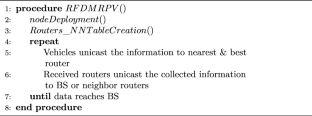
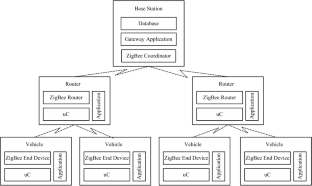
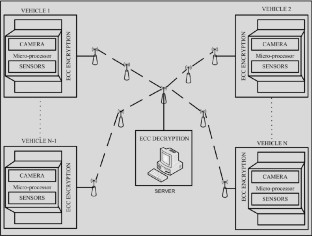
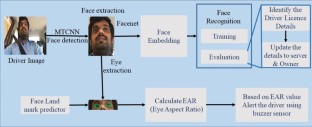
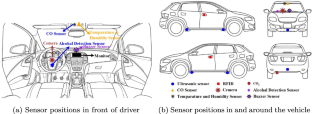
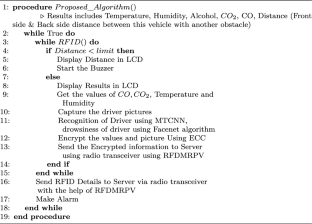
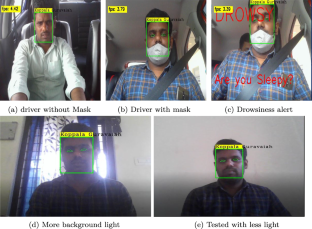
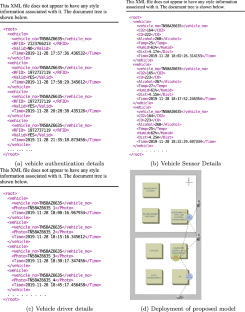
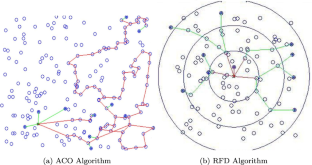
Similar content being viewed by others

Experimental Implementation of COVID-19 Safety Measures in Ride-Sharing Cabs Using Deep Learning and Internet of Things
Chapter © 2023

Deep Neural Networks for Passengers’ Density Estimation and Face Mask Detection for COVID-19 in Public Transportation Services
Chapter © 2022

Heavy Vehicle Classification Through Deep Learning
Chapter © 2020
Explore related subjects
Data Availability
The datasets generated during and/or analysed during the current study are not publicly available, but are available from the corresponding author on reasonable request.
References
- Al-Sultan, S., Al-Doori, M. M., Al-Bayatti, A. H., & Zedan, H. (2014). A comprehensive survey on vehicular ad hoc network. Journal of Network and Computer Applications,37, 380–392. ArticleGoogle Scholar
- Baldini, G., Giuliani, R., & Dimc, F. (2018). Road safety features identification using the inertial measurement unit. IEEE Sensors Letters,2(4), 1–4. ArticleGoogle Scholar
- Daniel, A., Paul, A., Ahmad, A., & Rho, S. (2016). Cooperative intelligence of vehicles for intelligent transportation systems (ITS). Wireless Personal Communications,87(2), 461–484. ArticleGoogle Scholar
- AlMarshoud, M. S., Al-Bayatti, A. H., & Kiraz, M. S. (2024). Security, privacy, and decentralized trust management in VANETs: A review of current research and future directions. ACM Computing Surveys. https://doi.org/10.1145/3656166ArticleGoogle Scholar
- Kannhavong, B., Nakayama, H., Nemoto, Y., Kato, N., & Jamalipour, A. (2007). A survey of routing attacks in mobile ad hoc networks. IEEE Wireless Communications,14(5), 85–91. ArticleGoogle Scholar
- Miorandi, D., Sicari, S., De Pellegrini, F., & Chlamtac, I. (2012). Internet of things: Vision, applications and research challenges. Ad Hoc Networks,10(7), 1497–1516. ArticleGoogle Scholar
- Guravaiah, K., & Velusamy, R. L. (2019). Prototype of home monitoring device using Internet of Things and river formation dynamics-based multi-hop routing protocol (RFDHM). IEEE Transactions on Consumer Electronics,65(3), 329–338. ArticleGoogle Scholar
- Yick, J., Mukherjee, B., & Ghosal, D. (2008). Wireless sensor network survey. Computer Networks,52(12), 2292–2330. ArticleGoogle Scholar
- Akyildiz, I. F., Su, W., Sankarasubramaniam, Y., & Cayirci, E. (2002). Wireless sensor networks: A survey. Computer Networks,38(4), 393–422. ArticleGoogle Scholar
- Statista. (2024). Number of vehicles in operation across India from financial year 1951 to 2020. https://www.statista.com/statistics/664729/total-nuhtytymj4mber-of-vehicles-india/
- NDTV. (2024). Vehicle thefts in India. https://www.ndtv.com/india-news/vehicle-theft-in-india-see-rise-of-2-5-x-in-2023-new-delhi-tops-chart-5238141
- Ministry of Road Transport & Highways, Government of India. (2024). Road accidents in India, 2022. https://morth.nic.in/sites/default/files/RA_2022_30_Oct.pdf
- Qi, S., Zuo, X., Feng, W., & Naveen, I. (2022). Face recognition model based on MTCNN and facenet. In 2022 IEEE 2nd international conference on mobile networks and wireless communications (ICMNWC) (pp. 1–5). IEEE.
- Saraswat, S., Singh, S., Middha, P., Thirwani, P., & Rohilla, H. (2024) Revolutionizing pandemic healthcare: Mask detection and patient face recognition. In 2024 14th international conference on cloud computing, data science & engineering (Confluence) (pp. 888–892). IEEE.
- Tariyal, S., Chauhan, R., Bijalwan, Y., Rawat, R., & Gupta, R. (2024) A comparitive study of MTCNN, Viola-Jones, SSD and YOLO face detection algorithms. In 2024 international conference on intelligent and innovative technologies in computing, electrical and electronics (IITCEE) (pp. 1–7). IEEE.
- Zhang, K., Zhang, Z., Li, Z., & Qiao, Y. (2016). Joint face detection and alignment using multitask cascaded convolutional networks. IEEE Signal Processing Letters,23(10), 1499–1503. ArticleGoogle Scholar
- Schroff, F., Kalenichenko, D., & Philbin, J. (2015). FaceNet: A unified embedding for face recognition and clustering. In Proceedings of the IEEE conference on computer vision and pattern recognition, pp. 815–823.
- Tamanani, R., Muresan, R., & Al-Dweik, A. (2021). Estimation of driver vigilance status using real-time facial expression and deep learning. IEEE Sensors Letters,5(5), 1–4. ArticleGoogle Scholar
- Tefft, B. C. (2012). Prevalence of motor vehicle crashes involving drowsy drivers, United States, 1999–2008. Accident Analysis & Prevention,45, 180–186. ArticleGoogle Scholar
- Kingsy Grace, R., & Manju, S. (2019). A comprehensive review of wireless sensor networks based air pollution monitoring systems. Wireless Personal Communications,108(4), 2499–2515. ArticleGoogle Scholar
- Kumar, S., Bhattacharyya, J., Vaidya, A., Chakrabarti, T., Devotta, S., & Akolkar, A. (2009). Assessment of the status of municipal solid waste management in metro cities, state capitals, class I cities, and class II towns in India: An insight. Waste Management,29(2), 883–895. ArticleGoogle Scholar
- Mohanty, S. P., Choppali, U., & Kougianos, E. (2016). Everything you wanted to know about smart cities: The internet of things is the backbone. IEEE Consumer Electronics Magazine,5(3), 60–70. ArticleGoogle Scholar
- Hu, H., & Fang, L. (2009). Design and implementation of vehicle monitoring system based on GPS/GSM/GIS. In Third international symposium on intelligent information technology application (Vol. 3, pp. 278–281). IITA. https://doi.org/10.1109/IITA.2009.411.
- Huang, S. I., & Shieh, S. P. (2011). Method and system for secure data aggregation in wireless sensor networks. US Patent 8,027,474.
- Ananthanarayanan, N. (2013). Intelligent vehicle monitoring system using wireless communication. In International conference on advances in technology and engineering (ICATE), pp. 1–5. https://doi.org/10.1109/ICAdTE.2013.6524722
- Gelvin, D. C., Girod, L. D., Kaiser, W. J., Merrill, W. M., Newberg, F., Pottie, G. J., Sipos, A. I., & Vardhan, S. (2014). Apparatus for compact internetworked wireless integrated network sensors (wins). US Patent 8,836,503.
- Bandyopadhyay, L. K., Chaulya, S. K., & Mishra, P. K. (2014). Tracking and monitoring system for opencast mines. US Patent 8,816,850.
- Barcelos, V. P., Amarante, T. C., Drury, C. D., & Correia, L. H. A. (2014). Vehicle monitoring system using IEEE 802.11p device and android application. In 2014 IEEE symposium on computers and communications (ISCC), pp. 1–7. https://doi.org/10.1109/ISCC.2014.6912495
- Ferdoush, S., & Li, X. (2014). Wireless sensor network system design using Raspberry Pi and Arduino for environmental monitoring applications. Procedia Computer Science,34, 103–110. https://doi.org/10.1016/j.procs.2014.07.059http://www.sciencedirect.com/science/article/pii/S1877050914009144. ArticleGoogle Scholar
- Srividya, P., & Devi, L. N. (2019). An IoT based vehicular pollution monitoring system for automobile. In Proceedings of the 2019 2nd international conference on computational intelligence and intelligent systems (pp. 173–176). ACM.
- Shinde, P. A., Mane, Y. B., & Tarange, P. H. (2015). Real time vehicle monitoring and tracking system based on embedded Linux board and android application. In 2015 International conference on circuit, power and computing technologies (ICCPCT), pp. 1–7. https://doi.org/10.1109/ICCPCT.2015.7159414
- Kang, B., & Huo, J. (2016). Web based smart sensor network tracking and monitoring system. US Patent 9,237,184.
- Nix, J. A. (2018). Set of servers for “machine-to-machine” communications using public key infrastructure. US Patent 9,998,281.
- Tran, D., Du, J., Sheng, W., Osipychev, D., Sun, Y., & Bai, H. (2018). A human-vehicle collaborative driving framework for driver assistance. IEEE Transactions on Intelligent Transportation Systems,20(9), 3470–3485. ArticleGoogle Scholar
- Dasgupta, A., Rahman, D., & Routray, A. (2018). A smartphone-based drowsiness detection and warning system for automotive drivers. IEEE Transactions on Intelligent Transportation Systems,20(11), 4045–4054. ArticleGoogle Scholar
- Amodio, A., Ermidoro, M., Maggi, D., Formentin, S., & Savaresi, S. M. (2018). Automatic detection of driver impairment based on pupillary light reflex. IEEE Transactions on Intelligent Transportation Systems,20(8), 3038–3048. ArticleGoogle Scholar
- Adithya, S., Kumar, M., Priyanka, L., Harshini, C., & Mamatha, E. (2018). Accident prevention system for vehicles using V2V communication. International Journal of Advanced Research in Computer Science,9(Special Issue 3), 142. Google Scholar
- Gupta, K., & Rakesh, N. (2018). IoT based automobile air pollution monitoring system. In 2018 8th international conference on cloud computing, data science & engineering (confluence) (pp. 14–15). IEEE.
- Ahmad, I., Suhaimi, M. F., & Yusri, N. A. N. (2019). Development of alcohol sensor detector with engine locking system for accident prevention. In AIP conference proceedings (Vol. 2129, p. 020196). AIP Publishing LLC.
- Park, J.-K., Hong, Y., Lee, H., Jang, C., Yun, G.-H., Lee, H.-J., & Yook, J.-G. (2019). Noncontact rf vital sign sensor for continuous monitoring of driver status. IEEE Transactions on Biomedical Circuits and Systems,13(3), 493–502. ArticleGoogle Scholar
- Leng, J., Liu, Y., Du, D., Zhang, T., & Quan, P. (2019). Robust obstacle detection and recognition for driver assistance systems. IEEE Transactions on Intelligent Transportation Systems. https://doi.org/10.1109/TITS.2019.2909275ArticleGoogle Scholar
- KolumbÁn-Antal, G., Lasak, V., Bogdan, R., & Groza, B. (2019). Air pollution monitoring with secure low-cost vehicular sensor networks. In ITM web of conferences (Vol. 29, p. 03007). EDP Sciences.
- Rabanal, P., Rodríguez, I., & Rubio, F. (2007). Using river formation dynamics to design heuristic algorithms. In C. S. Calude, M. J. Dinneen, G. Paun, G. Rozenberg, & S. Stepney (Eds.), Unconventional computation (pp. 163–177). Springer. ChapterGoogle Scholar
- Guravaiah, K., & Velusamy, R. L. (2015). RFDMRP: River formation dynamics based multi-hop routing protocol for data collection in wireless sensor networks. Procedia Computer Science,54, 31–36. ArticleGoogle Scholar
- Guravaiah, K., & Velusamy, R. L. (2017). Energy efficient clustering algorithm using RFD based multi-hop communication in wireless sensor networks. Wireless Personal Communications,95(4), 3557–3584. ArticleGoogle Scholar
- Guravaiah, K., Thivyavignesh, R., & Velusamy, R.L. (2017). Vehicle monitoring using internet of things. In Proceedings of the 1st international conference on Internet of Things and machine learning, pp. 1–7.
- Indian Emission Regulation. (2024). https://www.araiindia.com/pdf/Indian_Emission_Regulation_Booklet.pdf
Funding
The authors declare that no funds, grants, or other support were received during the preparation of this manuscript.
Author information
Authors and Affiliations
- Department of Computer Science and Engineering, Indian Institute of Information Technology Kottayam, Valavoor, Kerala, India Koppala Guravaiah & Niharika Naik Dharavathu
- Department of Computer Science and Engineering, National Institute of Technology Warangal, Hanamkonda, India Venkanna Udutalapally
- Department of Computer Science and Engineering, National Institute of Technology Tiruchirappalli, Tiruchirappalli, India Leela Velusamy Rangaraj
- Koppala Guravaiah










